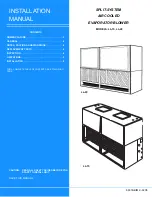
32
EN
Check the equipment regularly,
especially before storing it (for
example, on winter) paying particular
attention to damages and signs of
wearing.
For safety reasons, replace immediately
the worn or damage parts, in a way the
machine is always in a safe condition of
operation.
Cleaning:
The machine must always be carefully
cleaned after each use.
Clean the engine by hand (avoid
introducing water on the air filter and
exhaust). Avoid wetting the control
devices and other accessories
difficult to dry (the water arouses the
appearance of corrosion and rust);
Do not use aggressive cleaning
products. These products may damage
plastics and metals, compromising the
safe operation of the machine.
In a way to avoid fire hazards, the
cooling air openings, cooling fins and
exhaust shall be free of flammable
remains.
Maintenance:
Only maintenance works described in
this instruction manual may be carried
out; all other works must be performed
by an official distributor.
Use only VITO-approved tools for this
machine or technically identical parts.
Not doing so may result in personal
injuries or damages to the machine. In
case of doubt, you should contact an
official distributor.
For safety reasons, fuel conduction
components (hoses, tap, tank, tank’s
cover and connections) must be
checked regularly in a way to detect
damages and leaks. If necessary,
those must be replaced by an official
distributor.
Keep the warning and advising stickers
always clean and clear.
Keep all nuts and screws well tightened
in order to ensure a safe operation.
If any components or safety devices are
removed for maintenance works, they
must be repositioned immediately.
2.6 - STORAGE IN CASE OF
LONGER STOPPING PERIODS
Let the combustion engine cool down
before storing the equipment inside a
closed compartment. When operating,
the exhaust reaches very high
temperatures and remains hot for some
minutes after being turned off. Avoid
touching it while it’s hot.
Never store the machine with fuel on
the tank inside a building. Gasoline
steam may form and become highly
flammable.
Keep the machine inside a dry and well
ventilated place with the tank empty.
Avoid locations with high humidity to
prevent corrosion and rust.
Clean the equipment carefully
before storing it and ensure it is in an
operational state.
Make sure that the machine is protected
against misuse (for example, children).
2.7 -TECHNICAL ASSISTANCE
This machine must be repaired only by
the brand official technical service or
by qualified personnel and only with
original replacement parts.
3. ASSEMBLY
INSTRUCTIONS
3.1 - SHOULDER STRAPS
ASSEMBLY (FIG. E)
1. Tighten the shoulder strap fitting (2)
into the transportation back support
(11);
2. Make sure the fitting are well
tightened;
3.2 - BLOWING PIPES
AND THROTTLE HANDLE
ASSEMBLY (FIG. C)
1. Fit the flexible sleeve (22) into the
elbow pipe (25) and tighten the fixing
clamp screw (24);
2. Insert the connecting pipe (12) into
the flexible sleeve and tighten the fixing
clamp screw (21);
3. Place the throttle handle fixing
clamp (20) into the connecting pipe
(12). Adjust the handle according to the
desired position and tighten the fixing
screw;
4. Insert the middle pipe (19) into the
connecting pipe (12). Rotate the middle
pipe counter-clockwise until the fixing
screw holes match. Place and tighten
the fixing screw;
5. Insert the ending pipe (18) into the
middle pipe. Rotate the ending pipe
counter-clockwise until the fixing screw
holes match. Place and tighten the
fixing screw;
4. OPERATING
INSTRUCTIONS
When operating the blower, some
procedures must be followed in order
to avoid accidents and damages and
increase the machine’s efficiency:
� Make sure that the blower in turned off
in a distance superior to 3m from the
refuelling area;
� Let the engine heat at idle speed for
some seconds before using it;
� To avoid damages in the engine due
to excessive speed, do not obstruct
blower’s ending pipe opening;
� Minimize the dust using the vent at
lower speeds and spray the blowing
















































